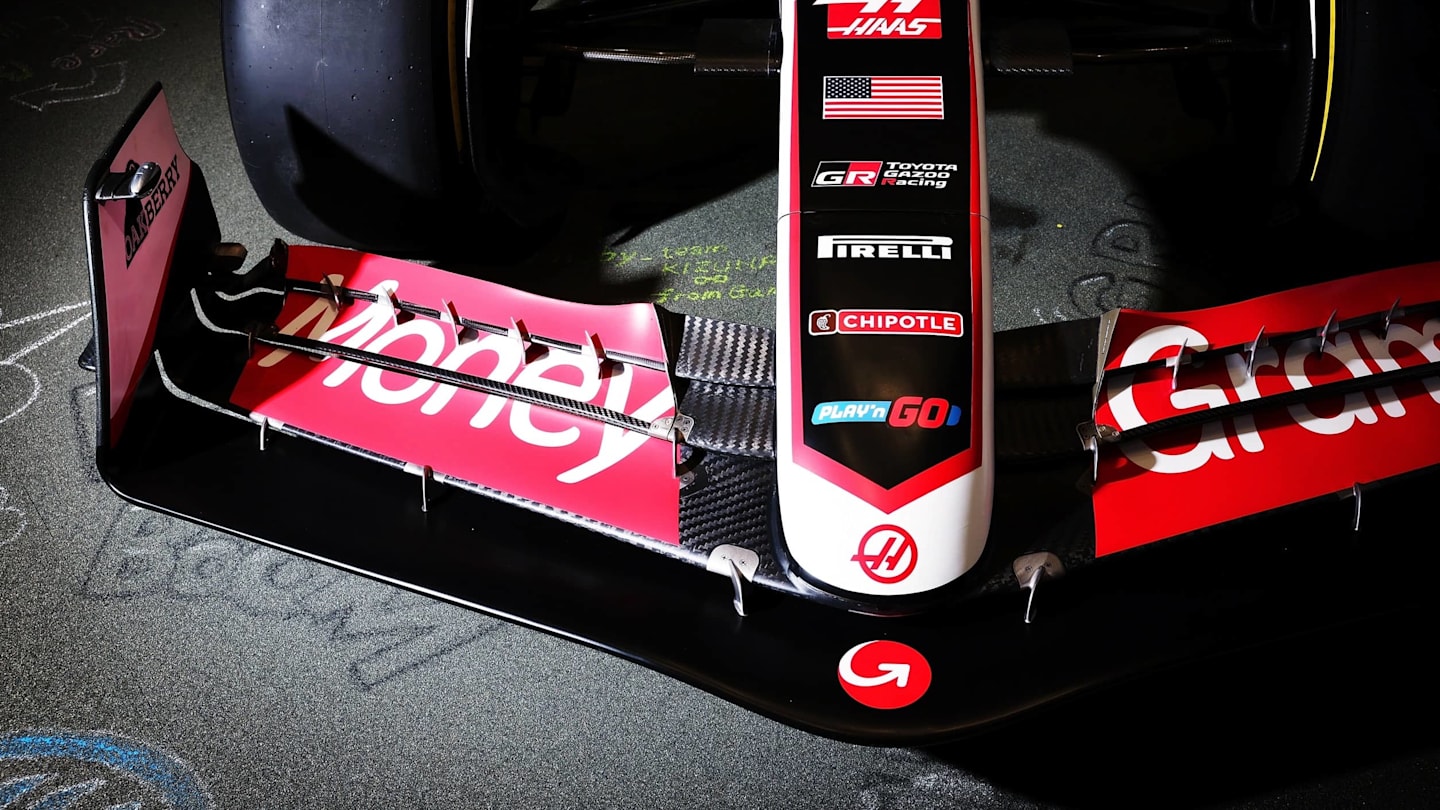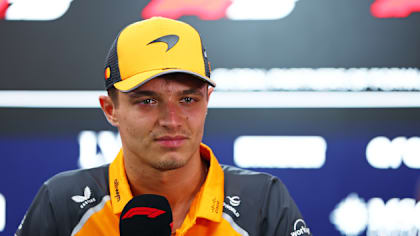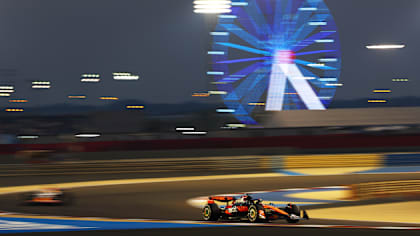
Feature
ANALYSIS: What’s behind Toyota’s return to Formula 1 with Haas – and how will it work?

Share

Haas have struck a deal that brings Toyota back into Formula 1 after a 15-year hiatus. F1 Correspondent Lawrence Barretto explains how and why the American squad have done it – and what’s in it for the returning Japanese manufacturer…
Haas have made a name for themselves as the smallest team on the grid and, this season, they have done an impressive job of punching well above their weight to sit P7 in the constructors’ championship – and with a genuine shot of snatching sixth from RB.
READ MORE: Toyota return to F1 as they sign multi-year technical partnership with Haas
But the American team know that to do that more consistently – P7 would be their second-best finish in their so far nine-year history – they need to evolve their organisation in the most efficient and cost-effective way possible.
Bringing Toyota’s motorsport arm – Toyota Gazoo Racing (TGR) – onboard alongside partners Ferrari and Dallara, who have been with them since their inception in 2016, does just that.

Haas announced the deal at the Toyota-owned Fuji International Speedway on Friday
Why are they partnering up?
When speaking on video call from Japan after announcing the news at Fuji International Speedway, Team Principal Ayao Komatsu admitted Haas are “lacking certain resources and hardware capabilities to understand certain things”. To ensure Haas remain competitive in the midfield consistently, he is “looking for someone to give us more resource and [who] also have the hardware and knowhow of that hardware”. In his view, TGR delivers on that.
Toyota have an impressive facility in Cologne in Germany. Currently, it’s home to the Japanese manufacturer’s World Endurance Championship team and the customer base for their European motorsport activities, which until last year included running a programme for McLaren to use their wind tunnel.
They have plenty of capacity to support new projects – and were keen to explore ways of working in F1 again. The Japanese manufacturer has been evaluating how it could reconnect with the sport for some time now – and began by doing a deal with McLaren that saw Le Mans 24 Hours winner Ryo Hirawaka joining their development programme, including their reserve pool.
Talks with Haas’s Komatsu about how they could potentially work together started ahead of the start of the season – and it soon became clear there were synergies in their respective goals.
“They are looking for the latest F1 know-how and skillset, which we have, but we don’t have their facilities, the number of people and their resource,” said Komatsu. “So, that’s how we are tapping into each other’s expertise.”

Toyota branding will appear on Haas’s cars from the upcoming United States Grand Prix
What impact will this have on Haas’s Ferrari relationship?
Komatsu wanted to stress Toyota will not reduce their relationship with Ferrari, who currently supply Haas with a multitude of parts, including the power unit and gearbox, while Haas have their own ring-fenced facility at the Italian team’s Maranello base.
“Our partnership with Toyota is not to replace our Ferrari partnership,” he said. “The Ferrari-Haas partnership is the foundation and it is always going to be the foundation. This partnership is not to take away from it but enhance that fundamental partnership with Ferrari.
“What we have with Ferrari, what we get from Ferrari, is amazing. It’s the foundation of Haas F1 Team. But there are areas Toyota can help us outside of that. We’ve been transparent with Ferrari management from the early stage of these discussions. There is a clear understanding of what engagement we have with TGR and how we will protect IP [intellectual property] of each company.”
So how will it work, then?
Haas and Toyota will begin their collaboration immediately, starting with next weekend’s United States Grand Prix in Austin, where TGR branding will be clearly visible on their cars.
And while commercially, this is understood to be a significant deal that runs into the tens of millions of dollars per year, it is so much more than that to both parties – and they both see the new relationship as a long-term project that has plenty of scope to grow.

Haas team boss Ayao Komatsu took to the stage alongside Toyota chiefs Akio Toyoda and Tomoya Takahashi
To start with, the duo are kicking off a plan to build a simulator at Haas’s base in Banbury, UK. Currently, the American team use Ferrari’s state-of-the-art simulator in Italy as part of their deal – but its location has meant Haas haven’t been able to utilise it as much as they would like.
“We’ve had access to the Ferrari simulator in Maranello and yes we have been using it, but not in anger,” said Komatsu. “We use it for pre-season but during the season, what we can do in the Maranello sim is limited. We only have a limited number of trackside personnel. We have what we have trackside. I can’t ask the UK-based guys who do 24 races to also do 10 days in Italy. The location prevented us doing more.”
He added: “Without this partnership, it’s difficult for us to have a sim programme. TGR has the expertise in sim both for themselves and as a customer project – so they have hardware and expertise in all aspects of sim operation. So we will take advantage of that.”
By bringing Toyota onboard, they have a company who already has the hardware to build a simulator, and the expertise and people to run it. That will allow Haas to get such a project up and running much quicker – and at a reduced cost. It will still take time – and getting it ready and correlated by next year would be a stretch. But it would still be quicker and more efficient than trying to do it themselves.

Toyota previously competed in F1 as a works team, appearing from 2002 to 2009
What do Toyota get out of the Haas deal?
Toyota get to embed their people in the simulator programme, which in turn will help build their respective F1 knowledge and experience.
It’s also an opportunity for Toyota to help develop young Japanese drivers – which is a cornerstone of their company targets.
F1 EXPLAINS: Downforce and why F1 cars have wings – with McLaren Aero Specialist Emel Cankaya
They have seen rival Honda come into F1 and not only become regular winners through their power unit but also successfully bring Japanese racing talent all the way through to F1, with Yuki Tsunoda now in his fourth season in the sport with the Red Bull family.
Toyota now have a pathway for their own Japanese talent – and can utilise the simulator programme to get them up to speed.
They will then combine this project with a Testing Previous Car (TPC) programme. This will be the first time Haas will have the ability to run two-year-old machinery in private testing.
This will allow Toyota to get their drivers in-car time that is invaluable in a prospective talent’s pursuit of trying to get to F1, while also being able to use their own engineers to work on the project and learn from the Haas engineers and mechanics who run their test team.

Komatsu is “hugely excited” by the partnership, saying it has “obvious benefits on both sides”
And what’s in it for Haas?
For Haas, the TPCs offer an opportunity for them to utilise Toyota talent, evaluate young drivers – including those from Toyota – and bring staff up to speed so that in the short-term, they have cover for the race team, and in the long-term there is a glidepath for bringing talent through.
“TPC is very important in terms of training personnel,” said Komatsu. “We have just over 300 people, we have no contingency in personnel, so if let’s say one race engineer, one performance engineer decides to leave or has a programme not to attend a race we are really struggling, on the limit all the time, and in order to improve the organisation you cannot be in that kind of survival stage as a baseline.
CHAMPIONS CLUB: How Norris and Piastri can join an exclusive group of title-winning McLaren drivers
“We’ve got to build up our organisation, so through TPC we can start training our engineers, our mechanics, having back-up people there. Of course the budget cap makes it more complicated in a way that we’re going to do it as a timesheet – so people dealing with ‘heritage’, i.e. TPC, is outside the cap – but many of those people have to cross over to the race team and beyond a certain percentage we have to include them in the budget cap, so that detail, we need to do it correctly.
“But in terms of building up an organisation, having a contingency, having a capacity, younger people, for me TPC is the best environment, so Toyota young drivers will be driving our TPC cars.”

Komatsu, Toyoda, Takahashi were in good spirits as they addressed the gathered media in Fuji
What does owner Gene Haas make of the arrangement?
Komatsu said it was “not difficult to convince Gene” Haas, the team’s owner, of the merits of partnering up with Toyota. A large chunk of the team’s budget comes from the American boss’s own pockets. As a result, he has always been keen to run his operation in the most cost-effective and efficient way. Bringing Toyota onboard, both in terms of financial benefit and expertise was, in Komatsu’s words, “a no-brainer”.
He added: “If you look at current financial regulations and the current landscape of the sport, even if we wanted to partner someone like this, you can’t find it. When I started talking to Kaji-San [Toyota’s motorsport boss Masaya Kaji], it was more an idea.
F1 QUIZ: Can you name the missing F1 team mate?
“The more we talked and understood each other’s objectives, the strengths and weaknesses, honestly it was the perfect match. So it wasn’t a difficult sell to Gene. To be cost effective, you’ve got to be time efficient. We have improved.
“Unless we take some other aspects of engineers in-house, which normally requires big investment, you cannot make a bigger step in terms of efficiency. With this investment with TGR we can make that leap very quickly. Gene is very engaged, he is always asking, ‘Ayao, what do we need to do to have a top-six consistent finish, and have a podium?’ So, no it was not difficult to convince Gene.”

What might the future hold for Japanese manufacturer Toyota in the F1 world?
What does all this mean for Dallara?
Dallara have been manufacturing Haas’s chassis since the American team entered the sport, but Toyota’s arrival has raised questions about how that relationship will continue in the future.
Komatsu said that Dallara are “an important partner” and called it “an important relationship” before adding that “in due course, we will discuss within which parameters [we] will work with Dallara and Toyota – but we will co-exist”.
What are Toyota’s ambitions regarding F1?
Toyota have been keen to stress that they currently have no plans for a full-scale return to Formula 1, adding to their eight-year stint in the sport that began in 2002 and yielded 13 podiums.
They insist they have no plans to create their own engine, with the pure focus of supporting on the aerodynamics side and using the project to build their employees’ knowledge and expertise in F1 while also finding a way to enhance their Japanese racing talent.
“We have no plan to have a team in Formula 1,” said Masaya Kaji. “At this moment, we have the best option – to collaborate with Haas.”
However, by doing a deal with such major scope, it’s clear Toyota have an interest in potentially expanding their footprint in Formula 1 in the future.
YOU MIGHT ALSO LIKE
Podcast F1 EXPLAINS: Ask an F1 Team Principal with Williams boss James Vowles
News Norris feels McLaren ‘unlikely’ to fend off Red Bull in Bahrain as he looks to ‘make amends’ for Suzuka
Report FP2: Piastri leads Norris as McLaren dominate second practice in Bahrain

Video HIGHLIGHTS: Relive the action from FP2 in Bahrain as Piastri sets the pace from Norris



